Acoustic vortices and singular beams
Focused acoustic beams are used commonly in a wide range of applications, for example, focused ultrasound beams are the basis of many therapeutical and imaging techniques. Beyond traditional beams, there exist singular beams with exotic properties, that can enable novel functionalities and engineering opportunities. These include vortex beams, nondiffracting acoustic beams such as Bessel or self-collimated beams, or drill beams, that can be generated under specific conditions.
Lines:
Vortex beams
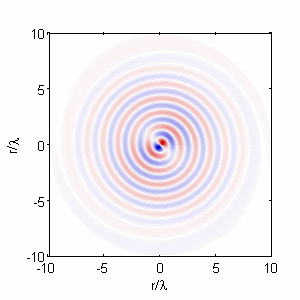
Acoustic beams can carry phase dislocations producing acoustic vortices. In these conditions the beam carries pseudo-angular momentum, as occurs in the case of high-order Bessel beams. High-order Bessel beams can be analogously generated using Archimedes’ spiral gratings where the order of the Bessel beam, i.e., the topological charge of the beam, is proportional to the number of arms of the spiral. Equivalently, active elements with spiral geometries can also generate high-order Bessel beams. The phase rotation needed to generate high-order Bessel beams can be generated using phase plates. Developable helicoidal/conical air-coupled active surfaces with phase dislocations have been also proposed using curved piezoceramics or flexible ferroelectrets. Finally, recently metasurfaces have been proposed to engineer the phase to generate acoustic vortices.
I'm studying the generation of acoustic vortices using the diffraction of plane waves over spiral shaped structures, holograms, surfaces with dislocations and arrays. We find-out that the diffraction of acoustic waves on multiple-arm Archimedean spirals generate arbitrary order Bessel beams based in spirals. Moreover, vortex focusing can be achieved by combining Fresnel zone-plates with spiral gratings. Using Fresnel-spirals geometrically optimal focused vortex beams are observed. This technique can be used to generate cheap lenses for acoustic particle manipulation and acoustic radiation force applications.
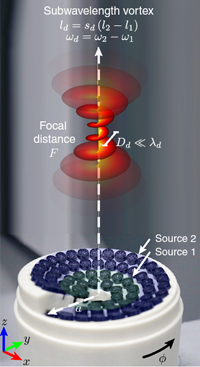
Other works include the generation of vortices smaller than the wavelength. Acoustic vortices with subwavelength dimensions and tunable topological charge are theoretically and experimentally synthesized at distances far beyond the Rayleigh diffraction length of the source, using self-demodulation. A dual helical acoustic source is used to generate two primary confocal vortex beams at different frequencies and different topological charges. As a consequence of the conservation of angular momentum during nonlinear wave mixing, a self-demodulated vortex beam at the difference frequency emerges, keeping the spatial features of the primary vortex beams and a topological charge that is the difference of their topological charges. We report subdiffractive vortices the characteristic size of which is 18 times smaller than its wavelength at a distance 2.8 times the Rayleigh diffraction length.
N Jiménez, J Ealo, RD Muelas-Hurtado, A Duclos, V Romero-García,
Physical Review Applied, 15 (5), pp 054027, (2021)
S Jiménez-Gambín, N Jiménez, F Camarena,
Physical Review Applied, 14 (5), pp 054070, (2020)
N Jiménez, V Romero-García, LM García-Raffi, F Camarena, K Staliunas,
Applied Physics Letters, 112, pp 204101, (2018)
N Jiménez, R Picó, V Sánchez-Morcillo, V Romero-García, L García-Raffi, K Staliunas,
Phys. Rev. E, 94 (5), pp 053004, (2016)
Bessel beams
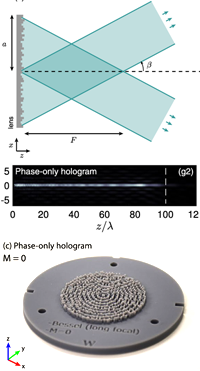
Bessel functions are exact and invariant solutions of the Helmholtz equation, i.e., an ideal Bessel beam do not experience diffraction. These beams present remarkable properties as self-healing, beam-width close to the diffraction limit and excellent depth-of-field. First proposed by Durnin in 1987, Bessel beams have been broadly studied in both, optics and acoustics. We have worked on methods to synthesize these beams, including phase gratings, lenses, and holograms.
While the transverse field distribution of Bessel beams generated using traditional passive methods is correctly described by a Bessel function, these methods present a common drawback: the axial distribution of the field is not constant, as required for ideal Bessel beams. In this work, we experimentally, numerically and theoretically report acoustic truncated Bessel beams of flat-intensity along their axis in the ultrasound regime using phase-only holograms. In particular, the beams present a uniform field distribution showing an elongated focal length of about 40 wavelengths, while the transverse width of the beam remains smaller than 0.7 wavelengths. The proposed acoustic holograms were compared with 3D-printed fraxicons, a blazed version of axicons. The performance of both phase-only holograms and fraxicons is studied and we found that both lenses produce Bessel beams in a wide range of frequencies. In addition, high-order Bessel beam were generated. We report first order Bessel beams that show a clear phase dislocation along their axis and a vortex with single topological charge. The proposed method may have potential applications in ultrasonic imaging, biomedical ultrasound and particle manipulation applications using passive lenses.
Other methods include axisimmetric gratings. The diffracted field by an axisimmetric gratings is similar to that of Bessel beams, characterized by elongated non-diffracting focal spots. A multiple foci structure is observed for finite-sized lenses. The dependence of the focal distance on the frequency can be geometrically estimated, on the basis of an extended grating theory. Experimental validation of acoustic Bessel-like beam formation was reported for sound waves. The results can be generalized to wave beams of different nature, as optical or matter waves.

S Jiménez-Gambín, N Jiménez, JM Benlloch, F Camarena,
Scientific Reports, 9 (1), pp 20104, (2019)
N. Jiménez, V. Romero-García, R. Picó, A. Cebrecos, V. Sánchez-Morcillo, L. García-Raffi, J. V. Sánchez-Pérez, K. Staliunas,
Europhysics Letters, 106, pp 24005, (2014)
Drill beams
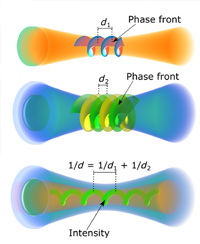
One of the key trends in wave-matter interation is the usage of structured beams, such optical or acoustic beams. In the case of light, collimated and focused Gaussian beams are the most common tools; however, more exotic beams can be beneficial too. For instance, Bessel beams with elongated focal area and self-healing properties, or vortex beams with helical wave fronts and a dark area along the optical axis are being increasingly used. Here, we propose and experimentally demonstrate dynamical "optical drill" beams presenting nonstationary intensity distributions that resemble a spinning mechanical drill. Optical drills appear as the spatiotemporal interference of two Bessel-vortex beams of different topological charges and different carrier frequencies. By mixing a pair of high-order Bessel beams, synthesized using a liquid crystal spatial light modulator, optical drills of tuned helicities are experimentally observed, and the simplest cases of matter processing (fluorescence) with such beams are demonstrated. Optical drill beams are expected to be useful in material processing by light or in cell and particle manipulation in biomedical applications.
EG Kontenis, D Gailevicius, N Jimenéz, K Staliunas,
Physical Review Applied, 17 (3), pp 034059, (2022)
Nonlinear acoustic beams
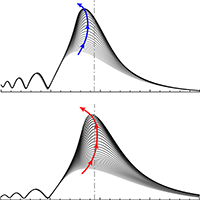
I'm studiying the phenomenon of the displacement of the position of the pressure, intensity and acoustic radiation force maxima along the axis of high intensity focused acoustic beams. Here, we study the case of a moderately focused beams excited with continuous and amplitude modulated signals, both in water and tissue. We prove that in amplitude modulated beams the linear and nonlinear propagation effects coexist in a semi-period of modulation, giving place to a complex dynamic behaviour, where the singular points of the beam (peak pressure, rarefaction, intensity and acoustic radiation force) locate at different points on axis as a function of time. These entire phenomena are explained in terms of harmonic generation and absorption during the propagation in a lossy nonlinear medium both for a continuous and an amplitude modulated beam.
I'm studing the finite-amplitude dependence of the acoustic radiation force (ARF) in soft tissue-like media. The amplitude dependent ARF and its spatial distribution is used to correct elasticity imaging techniques as Harmonic Motion Imaging to precisely estimate the elasticity of the tissue. The results obtained show that the nonlinear dependence of the acoustic radiation force highly depends on the tissue attenuation frequency dependence for both, weakly and strong nonlinear regime. We also show the underestimation of the momentum transfer in the nonlinear regime by calculating the ARF by using the wave intensity. 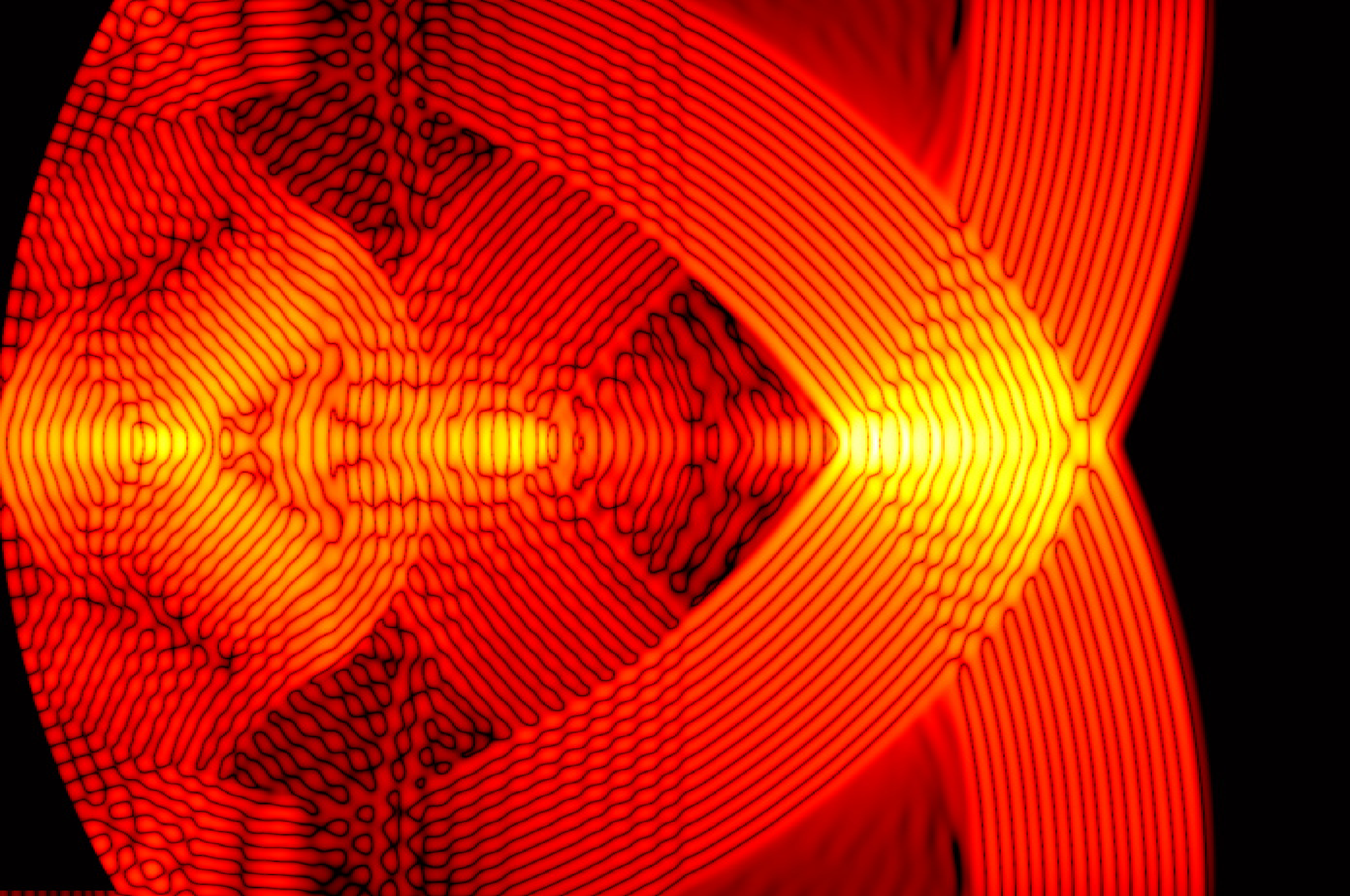 Considerations due to nonlinear absorption are included and the relation between the momentum transfer and energy deposition is underlined.
Considerations due to nonlinear absorption are included and the relation between the momentum transfer and energy deposition is underlined.
N. Jiménez, F. Camarena, N. González-Salido,
Ultrasonics, 75, pp 106–114, (2016)
F. Camarena, S. Adrián-Martinez, N. Jiménez, V. Sánchez-Morcillo,
The Journal of the Acoustical Society of America, 134 (2), pp 1463-1472, (2013)
N. Jiménez, F. Camarena, J. Redondo, V. Sánchez-Morcillo, Y. Hou, E. E. Konofagou,
Acta Acustica united with Acustica, 102 (5), pp 876–892, (2016)
Self-collimated beams
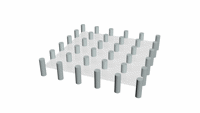
We investigate the propagation of high-intensity sound beams in a sonic crystal, under self-collimation or reduced-divergence conditions. The medium is a fluid with elastic quadratic nonlinearity, where the dominating nonlinear effect is harmonic generation. We explored the conditions for the efficient generation of narrow, nondiverging beam of second harmonic. Numerical simulations are in agreement with the analytical predictions made, based on the linear dispersion characteristics in modulated media and the nonlinear interaction in a quadratic medium under phase matching conditions.
E. M. Hamham, N. Jiménez, R. Picó, V. Sánchez-Morcillo, L. G. Raffi, K. Staliunas,
Phys. Rev. B, 92, pp 054302, (2015)